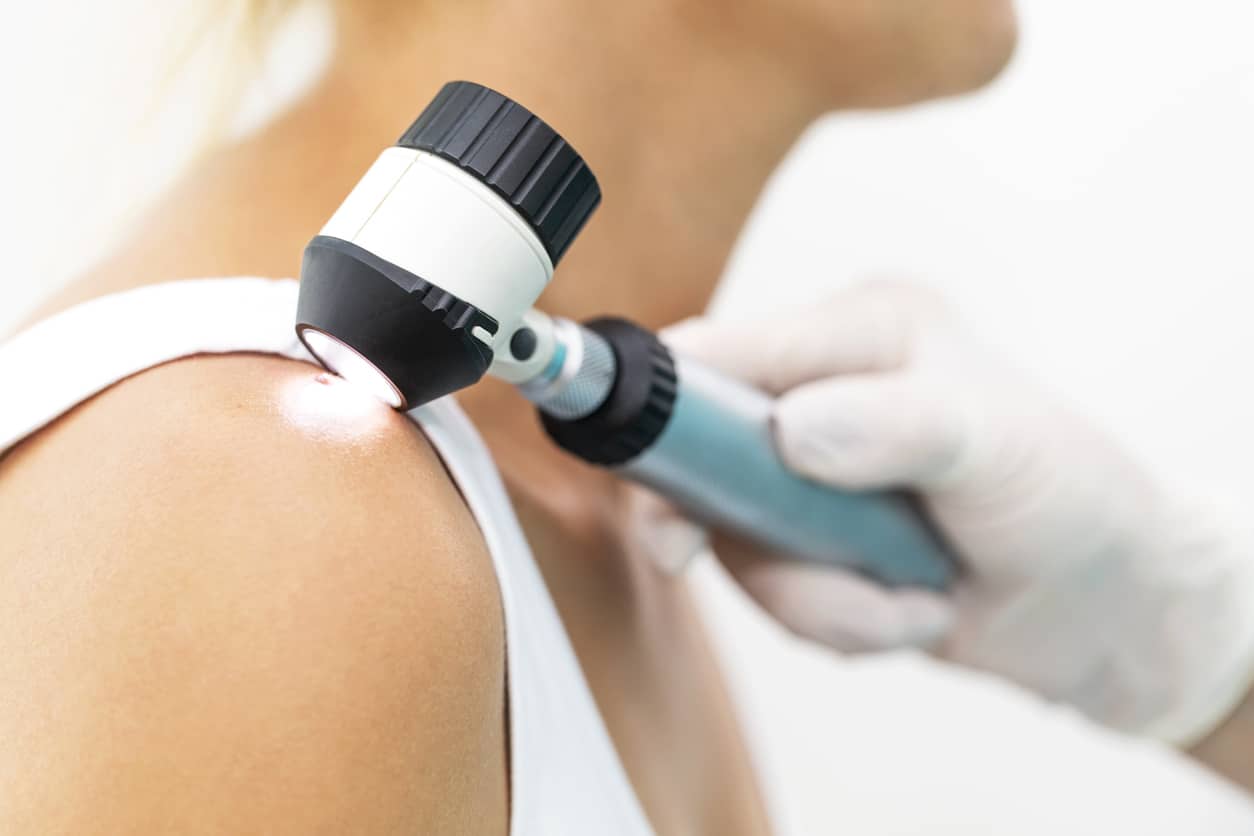As Valentine's Day approaches, it's time to show your skin some extra love and attention.…

Cancer or Just a Mole? – How to Identify Skin Blemishes at Home
Like the majority of living creatures on planet Earth, humans rely on the sun to survive. Without the vitamin D delivered by the sun’s rays, our bodies would struggle to reinforce bones, manufacture blood cells, or boost our immune systems. But with sunlight—as with so many of life’s great pleasures—too much of a good thing can cause serious, and even life-threatening, complications. That’s what makes performing a regular skin cancer check so important.
For many of us, summer means fun. But summer also means worrying about your exposure and the health of your skin. As we age, our skin becomes less resilient against solar radiation. Ultraviolet light is already powerful enough to alter and damage the DNA in our skin cells, but when combined with the natural effects of aging, our chances of serious harm increase even more.
Melanoma by the Numbers
In 2021, an estimated 106,000 American adults will receive the news that we all dread: a diagnosis of melanoma. But, to put things into perspective, that’s only .03% of the national population. All things considered, the fear of melanoma is more common among adults than the diagnosis of melanoma.
Statistics and percentages offer little comfort once we’ve spotted a dubious blemish somewhere on our skin. But there’s an easy method for at-home skin checks that may also provide you with some peace of mind.
The ABCDE Method
Once you’ve spotted a concerning blemish on your skin, the question usually becomes: should I get this checked? The ABCDE method can help us make that determination. When detected early, skin cancer can be effectively treated and eliminated, making any method of early detection all that much more important.
Here’s how it works.
A is for Asymmetry
As a general rule of thumb, benign blemishes present more symmetrically than cancerous blemishes. While some blemishes change shape over time, they generally do so within a limited range of symmetrical shapes.
If your blemish is asymmetrical and remains that way over time, you may need to schedule an appointment with your dermatologist.
B is for Border
The borders of our blemishes can tell us a lot about their nature. Benign blemishes usually have smooth, even borders with round or well-defined limits. Cancerous blemishes, on the other hand, display rough, jagged, or otherwise irregular borders.
Imagine tracing a circle onto a piece of paper using a pot lid as a guide; this is your non-cancerous blemish. Now imagine trying to draw a circle yourself after several cups of coffee; this jittery circle resembles a cancerous blemish.
C is for Color
Melanin is the pigment responsible for the color of our skin, hair, and eyes. When melanin concentrates at certain spots along our skin, it can take on a whole range of unusual colors from black to red, purple to blue, and just about everything in between.
But examining a blemish isn’t about color so much as determining how many colors a single blemish contains. Benign blemishes usually only have one color, whereas cancerous blemishes may exhibit two or more colors.
D is for Diameter
Here, a small ruler may come in handy. For those of us years or even decades removed from high school geometry, the diameter of a circle can be measured in a straight line through the circle’s middle.
Cancerous blemishes can grow to exceed 6mm in diameter—or, in other terms, they can exceed the usual thickness of a pencil. Benign blemishes, by contrast, seldom grow larger than 6mm.
E is for Evolution
To make matters somewhat more difficult, cancerous blemishes are known to change their features from day to day or week to week. At any given moment, you may notice a new color, size, or shape in a potentially cancerous mole.
Benign blemishes, meanwhile, tend to stay the same over short and long periods of time. If you’ve noticed a blemish morphing, it may be time for a dermatology appointment
Nothing to Fear
As a hopeful member of the 99.97% of the population that will not experience melanoma in 2021, your odds were already low. But by regularly checking blemishes with the ABCDE method, you can give yourself even better odds. Vigilance pays off either way, and you can find some peace of mind to boot.
If your blemish presents with one or more of the above symptoms, it’s time to bring in a professional. The expert dermatologists at Pinnacle Dermatology can examine your blemish, take biopsies if necessary, and ultimately determine a course of action—whether it’s outlining your treatment options or simply sending you home to enjoy the rest of your summer.
At-home skin cancer checks save lives. So do dermatologists.
While extremely helpful, the ABCDE method of at-home blemish checking isn’t perfect. Some blemishes may be hard to qualify, causing us greater concern and worry about our future. If you’ve spotted a suspect blemish, or if you’ve noticed some of the features listed in the ABCDE method, contact us through our website or call us at (843) 524-5550 to make an appointment today.



